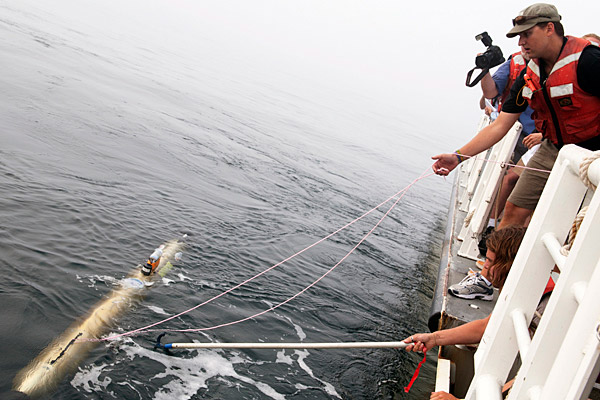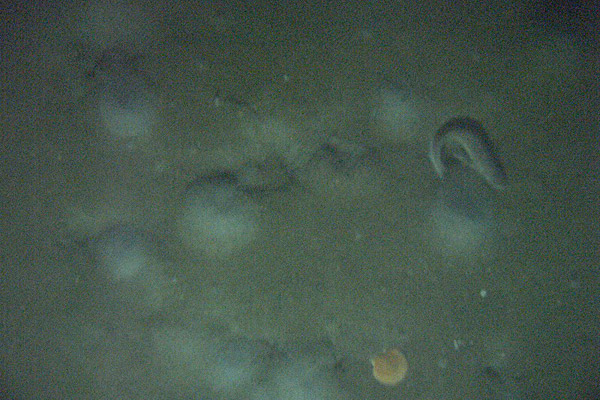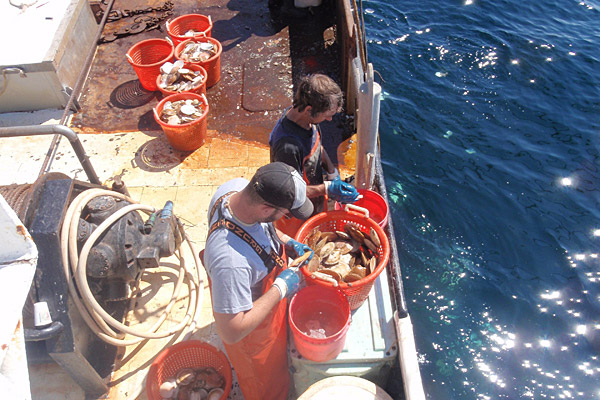


'Crowdsourcing'
Volunteers to help scientists analyze images on sea floor
9:01 a.m., March 5, 2012--Digital cameras make it easy to take a lot of photos – so many, in fact, that they can be difficult to sort through.
Try having more than 250,000. That is how many images researchers took of the ocean floor last summer as part of a new approach to estimating the mid-Atlantic sea scallop population. Now they are tasked with examining each photo, searching for scallops within the frame and counting exactly how many and what size.
Research Stories
Chronic wounds
Prof. Heck's legacy
It’s a big job, and one in which they hope to enlist the help of science-minded volunteers. Art Trembanis, associate professor of geological sciences in the College of Earth, Ocean, and Environment, is developing a website where citizen scientists can log in, pull up individual photos and click on the small, sandy circles indicating scallops.
“We are excited to have the public assist in this,” Trembanis said.
The concept is part of a growing trend to “crowdsource” scientific research that involves processing large quantities of visual data. Zooniverse.org, for example, houses multiple projects that the general public can take part in, from searching for exploding stars to studying the lives of the ancient Greeks. The site has more than a half-million participants.
Last year Trembanis partnered with NASA on one of the first marine Zooniverse applications, exploring the animals and formations around a Florida reef. A total of 485 volunteers examined seabed images 48,000 times to map an area where astronauts train underwater to simulate future missions to asteroids. A scoreboard ranked the top 50 identifiers to encourage friendly competition, much like a video game.
Trembanis hopes for similar success with his sea scallop project. Together with fishermen Kenny and Arthur Ochse, he is assessing the health and abundance of scallops off the mid-Atlantic coast to help regulators set fishing limits for commercial scallopers. Instead of using dredges to scoop scallops of all sizes up off the ocean floor, as traditional surveys do, the team adopted a new photography technique that is less disruptive to the ocean habitat and more accurate.
From the deck of a fishing boat, researchers send a remotely programmed, underwater robot called an autonomous underwater vehicle (AUV) into the ocean to take photos two meters above the sea floor while moving forward at a steady pace. The resulting images can be cobbled together into a mosaic, creating a continuous map using precise location information collected by the mini-submarine. Last summer the instrument documented nearly 200 acres (800,000 square meters) in a back-and-forth pattern and also generated sonar images of the topography that show features such as gouges in the sand where dredging previously occurred.
To date, Trembanis’s three students have together looked at each of the 255,000 images – once. Ideally they would like to have every image reviewed at least four times, averaging the scallop counts in each photo to make a more precise estimate. The more volunteers on board, the quicker and more accurate the undertaking would be.
The team plans to conduct another survey this summer and turn the data around more quickly, possibly helping regulators adjust the scallop catch limit mid-season if warranted. They are finishing the beta version of a website for scallop image analysis and collaborating with the National Oceanic Atmospheric Administration’s Fisheries Service to further develop the site in a user-friendly way that is appealing to teachers, students and the general public.
In addition to volunteers, Trembanis is also enlisting the help of computers by working with Herbert Tanner, UD assistant professor of mechanical engineering, on an automated shape detection program for scallops. The prototype is helpful in determining whether there are scallops in a photo at all, as is the case in only about five percent of the images. Yet the system still has some kinks, such as difficulty distinguishing between scallops and sand dollars. Simply put, computers are just not as good as people yet.
“We have the best image-processing computer on the planet resting on our shoulders,” Trembanis said.
People interested in volunteering for this project should contact Trembanis at art@udel.edu or 302-831-2498.
Article by Teresa Messmore
Photos by Evan Krape and Art Trembanis










